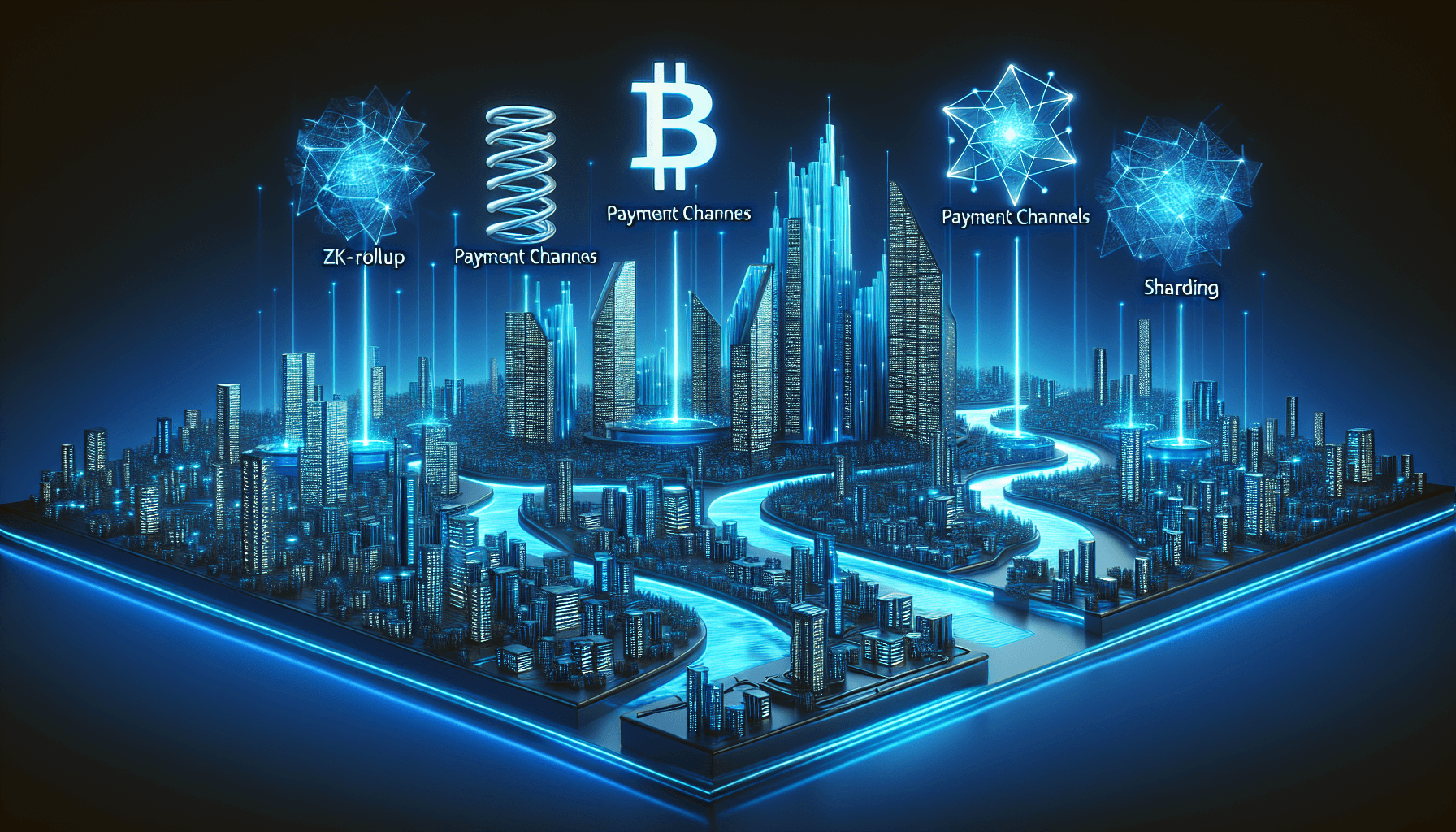Are you seeking the “crypto with the fastest transaction speed over time”? This guide cuts through the noise, directly charting the leading cryptocurrencies renowned for their swift transaction speeds in 2024.
Expect a straightforward rundown without fluff, focused on delivering the fast “crypto with the fastest and highest transaction speed in the crypto with fastest transaction time ever” data you want.
Key Takeaways
- Cryptocurrency transaction speeds are crucial for network efficiency and are measured in Transactions per Second (TPS), influenced by block size, block time, fees, and consensus mechanisms.
- Solana, Ripple, EOS.IO, Stellar, and Cardano are leading cryptocurrencies recognized for their high transaction speeds, which are enabled through innovative consensus mechanisms and network optimizations.
- Fast transaction speeds enhance user experience, improve economic efficiency, and support DApps and intelligent contracts performance, but also raise challenges in regulatory compliance and environmental impact.
| Cryptocurrency | Transaction Time | Consensus Mechanism | Key Features | Use Cases |
|---|---|---|---|---|
| Solana (SOL) | 400 milliseconds | Proof of History (PoH) | High throughput, low fees, scalable | Decentralized apps (dApps), DeFi, NFTs, payments |
| Avalanche (AVAX) | 1-2 seconds | Avalanche Consensus | High scalability, low latency, eco-friendly | DeFi, asset issuance, enterprise applications |
| Algorand (ALGO) | 4-5 seconds | Pure Proof of Stake (PPoS) | Quick finality, low energy consumption | Payments, DeFi, decentralized finance |
| Fantom (FTM) | 1-2 seconds | Asynchronous Byzantine Fault Tolerance (aBFT) | High speed, low cost, scalable | DeFi, dApps, smart contracts |
| Near Protocol (NEAR) | 1-2 seconds | Nightshade Sharding | High speed, scalability, user-friendly | dApps, DeFi, NFT marketplaces |
Understanding Crypto Transaction Speed

In blockchain, transaction speed refers to the volume of transactions a network can process within a specific timeframe. This is often measured regarding transactions per second (TPS) and network bandwidth.
Bitcoin’s transaction speed, like the heartbeat of a blockchain network, dictates the pace at which transactions are processed and data is transferred. If you’re wondering how to calculate TPS, it’s a simple formula: TPS = (block size / average transaction size) / block time.
You may wonder why transaction speed is so vital. This is primarily due to its influence on a network’s efficiency. An elevated TPS signifies the network’s ability to manage numerous transactions, increasing efficiency. For a blockchain network to operate as a global financial system offering real-time financial transactions, it needs a significant transaction speed.
Block time and size, transaction fees, and network traffic influence a cryptocurrency’s transaction speed or network’s transaction speed. These factors determine how quickly transactions can be completed on a cryptocurrency network.
Factors Affecting Transaction Speed
Transaction speed in a blockchain network doesn’t operate in isolation. Numerous components shape it. One of the significant influencers is the type of consensus mechanism in place. This consensus mechanism dictates the process to validate transactions and confirm transactions and sets limits on processing capacity.
Another critical factor that can lead to slower transaction speeds is network congestion. When transaction demand exceeds the network’s capacity due to limited block sizes, the time needed for block creation, or rising transaction volumes, it can result in congestion.
In such situations, users may increase their transaction fees to prioritize transactions. The transaction size influences these fees in bytes and the urgency of validating transactions for faster processing.
The size and number of transactions in the transaction itself can also directly affect transaction speed, as more significant transactions require higher fees, and more transactions can lead to slower transaction speed due to delays in a congested network.
| Factor | Description | Impact on Speed |
|---|---|---|
| Network Congestion | High transaction volume can lead to congestion on a blockchain or network, causing delays. | Slows down transactions |
| Block Size | The maximum amount of data that can be included in a single block. Larger blocks can process more transactions at once but may increase propagation time. | Variable impact |
| Transaction Fees | Higher fees often prioritize transactions for faster processing, as miners or validators are incentivized to include higher-fee transactions. | Increases speed with higher fees |
| Consensus Mechanism | The protocol used to validate transactions (e.g., Proof of Work, Proof of Stake). Some mechanisms are faster due to lower computational requirements. | Significant impact |
| Network Latency | The time it takes for a transaction to propagate across the network. Lower latency results in quicker confirmations. | Decreases speed with high latency |
| Node Performance | The hardware and software capabilities of nodes in the network. Higher-performance nodes can validate and propagate transactions more quickly. | Improves speed with better performance |
| Smart Contract Complexity | More complex smart contracts require additional computational resources, which can slow down transaction processing. | Slows down transactions |
| Blockchain Size | As a blockchain grows, syncing and validating transactions can take longer, especially for full nodes. | Can slow down speed over time |
| Geographic Distribution | The physical distance between nodes affects communication speed. Wider distribution can lead to higher latency. | Variable impact |
| Regulatory Compliance | Compliance checks, such as KYC/AML in financial transactions, can introduce additional processing steps. | Slows down transactions |
Top Cryptocurrencies with Impressive Transaction Speeds

Now that the significance of transaction speed in other blockchain networks is clear, let’s highlight the cryptocurrencies at the forefront of the largest blockchain networks for communication. Renowned for their impressive transaction speeds, these cryptocurrencies are setting the pace in the blockchain industry and paving the way for a more efficient and scalable future of inter-blockchain communication.
Solana (SOL)
Solana is a true trailblazer when it comes to transaction speed. Solana processes transactions with impressive efficiency by harnessing a unique hybrid proof-of-history (PoH) and proof-of-stake (PoS) consensus mechanism.
In processes, the blockchain network achieves an actual transaction speed of over 4,400 transactions per second, reflecting its high-speed capabilities in real-world scenarios and showcasing its impressive average transaction speed, surpassing Bitcoin’sbitcoin’s highest actual transaction speed.
Ripple (XRP)
Not far behind Solana is Ripple, another high-speed cryptocurrency. Ripple’s rapid transaction validation comes from the Ripple Protocol Consensus Algorithm (RPCA), which enables the network to handle 1,500 transactions per second and potentially reach up to 50,000 TPS.
Transactions on the Ripple network are settled in 3-5 seconds, demonstrating the blockchain platform’s efficiency over traditional and custom digital assets and payment processors, protocols, and systems.
Ripple’s low transaction fees, based on the amount of XRP used rather than the transaction’s monetary value, also contribute to the platform’s cost-effectiveness.
EOS.IO (EOS)
EOS.IO is yet another cryptocurrency known for its high-speed transactions. The Delegated Proof of Stake (DPoS) mechanism of EOS.IO plays a central role in its efficient transaction processing. Capable of reaching a peak transaction speed of 4,000 transactions per second, EOS.IO’s DPoS consensus algorithm sets it apart in the realm of other high transaction-speed cryptocurrencies.
An added advantage of EOS.IO is its fee-less transaction model, which makes it an attractive and scalable blockchain platform for developers and users by removing the barriers associated with transaction costs.
Stellar (XML)
Known for its fast transactions and low fees, Stellar is a force to be reckoned with in high-speed cryptocurrencies. The Stellar Consensus Protocol (SCP) facilitates fast transactions on the network, with up to 1,000 transactions per second.
Stellar operates a decentralized exchange within its network decentralized exchanges, allowing users to trade currencies and assets directly without needing a third-party intermediary.
Cardano (ADA)
Cardano is another notable player in the high-speed cryptocurrency world. It utilizes Ouroboros, an energy-efficient Proof of Stake (PoS) consensus algorithm. The Vasil hard fork upgrade enhanced Cardano’s capabilities, offering lower transaction fees and increasing the speed of process transactions to over 1,000 TPS.
Ouroboros improves transaction speed and cost and ensures a decentralized, decentralized and secure nature and sustainable blockchain network for decentralized applications.
Scalability vs. Decentralization in Fast Transaction Speed Cryptos

In blockchain technology, scalability and decentralization are continually at odds. The blockchain scalability trilemma suggests that the most significant blockchain networks can, at best, optimize for two out of three key features—decentralization, security, and scalability.
This means that improvements in one area’s fastest blockchain networks may necessitate compromises in others.
Blockchain developers tackle the scalability issue to manage a high transaction per second rate while upholding the core principles of security and decentralization.
As the number of network nodes increases, managing transactions becomes more challenging, prompting concerns over network and scalability issues, potential centralization, and the ability of nodes to handle larger transaction loads.
| Feature | Scalability | Decentralization |
|---|---|---|
| Definition | The ability of a blockchain network to handle an increasing number of transactions per second (TPS) without compromising performance. | Distribution of network control and consensus across a wide range of nodes reduces the risk of central authority and improves security. |
| Impact on Transaction Speed | Enhances transaction speed by increasing block size, reducing block time, or using Layer 2 solutions like sidechains and state channels. | It can limit transaction speed if many nodes are involved in consensus, leading to latency and potential bottlenecks. |
| Trade-offs | Higher scalability often requires sacrificing some decentralization (e.g., reducing the number of nodes required for consensus). | Strong decentralization may reduce scalability due to the need for widespread agreement and data replication across many nodes. |
| Technologies Used | Sharding, Layer 2 solutions (e.g., Lightning Network for Bitcoin, Optimistic Rollups for Ethereum), Proof of Stake (PoS). | Proof of Work (PoW), Proof of Stake (PoS) with high node participation, federated consensus mechanisms (e.g., Stellar, Ripple). |
| Examples | Solana, Binance Smart Chain, Polygon (focusing on high TPS with lower decentralization). | Bitcoin, Ethereum (before the transition to Ethereum 2.0), and Cardano (emphasizing decentralization with more validators). |
| Security Implications | Potential vulnerabilities if centralization increases, as fewer nodes can lead to easier exploitation or collusion. | Due to its decentralized nature, more robust security may suffer from reduced efficiency and higher costs per transaction. |
| User Experience | Faster and cheaper transactions may compromise trust and security if the network becomes too centralized. | The network’s fairness has higher trust and security, but users may experience slower transactions and higher fees. |
Innovations in Blockchain Technology for Faster Transactions

Several advancements in blockchain technology have surfaced in the pursuit of accelerated transactions. Zero-Knowledge Rollups (ZK-rollups) and Ethereum’s Optimistic Rollups, like Arbitrum and Optimism, offer scalable off-chain contract execution, settling on the main blockchain and allowing faster transaction speeds and increased privacy.
Payment channels such as the Lightning Network establish a two-party transaction channel, swiftly processing numerous transactions off-chain, with the final state recorded on the main blockchain.
Some technological developments that aim to boost scalability in blockchain networks, a form of distributed ledger technology, include:
- Sidechains and state channels are secondary ledgers and allow for handling transactions independently from the main chain, reducing the burden on the main blockchain and expediting the transaction process.
- Sharding, which breaks down the blockchain data into smaller, manageable parts called shards. These shards can be processed in parallel, increasing the volume of transactions a network can handle simultaneously.
- Ethereum’s anticipated EIP 4844 is designed to boost Layer 2 scalability further. This improvement aims to reduce transaction fees while dramatically increasing transaction speeds.
These developments are crucial for improving the scalability of existing blockchain platforms and networks and making them more efficient, ultimately leading to the creation of the most scalable and fastest blockchain platforms and platforms, which are considered the most scalable and popular blockchain networks and platforms.
The Impact of Fast Transaction Speeds on Crypto Adoption

Rapid transaction speeds notably improve user experiences by facilitating swift fund transfers and minimizing the wait time for transaction confirmations, leading to a more intuitive and gratifying use of cryptocurrencies.
Benefits of rapid transaction speeds include:
- Economic efficiency and blockchain scalability are improved through the capacity to process high volumes of transactions swiftly
- Reduced costs for users and businesses
- Accommodating a growing number of transactions as the user base expands.
DApps and smart contracts operate more effectively on blockchains with high transaction speeds, ensuring responsive applications and timely executions, which is vital for decentralized finance (DeFi) and supply chain management.
Cryptocurrencies offering high transaction speeds and low fees position themselves as formidable competitors to traditional payment systems. They appeal to a broader range of users in scenarios where speed is critical, such as trading and remittances.
| Aspect | Details |
|---|---|
| Definition | Fast transaction speeds refer to the quick processing and confirmation times of transactions on a blockchain network. |
| Importance in Crypto Adoption | Faster transaction speeds enhance user experience, increase trust, and improve scalability, making cryptocurrencies more viable for everyday transactions. |
| Key Metrics | – Transaction per Second (TPS) – Confirmation Time – Network Latency |
| Benefits | – Reduces wait times for users – Lowers transaction fees due to decreased congestion – Improves liquidity and user satisfaction |
| Challenges | – Maintaining decentralization while increasing speed – Scalability issues – Security vulnerabilities and risks of centralization |
| Technological Solutions | – Layer 2 scaling solutions (e.g., Lightning Network, Optimistic Rollups) – Alternative consensus mechanisms (e.g., Proof of Stake, DAG) |
| Market Impact | Fast transactions can attract more users to crypto platforms, increase trading volume, and drive broader adoption in various sectors like DeFi, gaming, and remittances. |
| Real-World Examples | – Solana: Known for high TPS but faced issues with network stability – Binance Smart Chain: Achieved high speed with lower fees but criticized for centralization |
Environmental Considerations: Energy Consumption and Consensus Mechanisms
The pursuit of accelerated transaction speeds in cryptocurrencies comes with its own set of environmental issues. Proof of Work (PoW) cryptocurrencies require substantial computational power and energy consumption, which has raised significant environmental concerns.
As an example of a PoW application, Bitcoin mining is estimated to produce about 90.2 million metric tons of CO2 annually, with approximately 44,400 metric tons of electronic waste each year.
The environmental impact of blockchain’s high energy consumption has led to a shift towards more energy-efficient consensus mechanisms, with some high-speed blockchains adopting alternatives to PoW. Renewable energy sources have been suggested as a way to mitigate the environmental impact of blockchain technology, though the overall effectiveness of this strategy remains a topic of discussion.
Regulatory Compliance and Financial Crime in High-Speed Cryptocurrencies

High-speed cryptocurrencies face considerable challenges in maintaining regulatory compliance and striking a balance between fast transactions, transparency, and robust security measures to stave off financial crimes.
The Indian G20 Presidency has emphasized the need for more transparent policies on cryptocurrencies, supported by recommendations from organizations like the IMF, advocating for a comprehensive policy approach that includes safe and efficient regulatory frameworks.
International collaboration on AML regulations, the Travel Rule, and the challenges posed by the pseudonymity of transactions showcase the ongoing efforts to enhance transparency and accountability in cryptocurrency and to track and prevent illicit activities across borders.
To protect financial stability and sovereignty while facilitating regulatory compliance, policy frameworks emphasize the importance of strong domestic institutions, clear tax policies, and integration of crypto assets into existing capital management schemes.
| Aspect | Description |
|---|---|
| High-Speed Cryptocurrencies | Cryptocurrencies such as Solana, Ripple (XRP), and Algorand are optimized for rapid transactions with low latency. |
| Regulatory Compliance Challenges | Ensuring compliance with local and international regulations is complex due to these currencies’ decentralized and fast-paced nature. Jurisdictions may have different requirements, making global compliance difficult. |
| Financial Crime Risks | High-speed transactions can facilitate money laundering, fraud, and other financial crimes because they can move funds quickly across borders with minimal oversight. |
| AML (Anti-Money Laundering) Controls | Implementing effective AML controls is critical but challenging. Solutions include real-time monitoring, advanced analytics, and AI-driven detection systems to track suspicious activities. |
| Regulatory Frameworks | Frameworks vary widely, with some countries adopting stringent measures while others remain more lenient. Examples include the EU’s MiCA (Markets in Crypto-Assets) Regulation and the U.S. FinCEN regulations. |
| Technological Solutions | Blockchain analytics, Know Your Customer (KYC) protocols and transaction monitoring tools are crucial in maintaining compliance and detecting financial crimes. |
| Cross-Border Challenges | Coordinating compliance across multiple jurisdictions remains a major hurdle, especially in areas without harmonized regulatory standards. |
| Impact on Adoption | Strict compliance requirements could slow adoption, while lax regulations may increase the risk of financial crimes, affecting the reputation and reliability of the cryptocurrency. |
Enhancing User Experience for Widespread Crypto Adoption
Improving the user experience is critical for cryptocurrencies to achieve widespread adoption. A significant barrier to cryptocurrency adoption is the complexity of using blockchain platforms, with complicated interfaces and poor usability intimidating many potential users.
By simplifying the user experience on a blockchain platform with user-friendly interfaces and multilingual support, broader participation in the financial revolution is encouraged.
Detailed, personalized customer support and 24/7 assistance can significantly enhance the user experience and ensure users do not feel abandoned when encountering difficulties.
Implementing rigorous safety measures, including backups, security features like recovery phrases, and regular software updates, is imperative for protecting digital assets.
Summary
In the ever-evolving world of cryptocurrencies, transaction speed is crucial in determining a network’s efficiency, scalability, and success.
From Solana to Ripple, EOS.IO to Stellar and Cardano, we have seen how various cryptocurrencies have capitalized on unique consensus mechanisms and innovative technologies to achieve impressive transaction speeds.
As we progress with other blockchain platforms and projects, we focus on balancing scalability with security and decentralization, mitigating environmental impacts, ensuring regulatory compliance, and enhancing user experience to foster widespread adoption of cryptocurrencies’ fastest blockchain platforms.
Frequently Asked Questions
What is the fastest blockchain record?
The TON Blockchain holds the fastest-ever blockchain speed record, which achieved an impressive speed of 104,715 transactions per second, making it the world’s quickest and most scalable blockchain.
What is the fastest crypto for smart contracts?
Solana is considered the fastest crypto for smart contracts, with speeds of over 4,400 transactions per second.
What is the fastest TPS?
The fastest TPS (transactions per second) recorded was approximately 104,715, achieved by the TON testnet using 256 validators. This is impressive transaction speed and far surpasses the speeds of traditional digital payment protocol systems like Visa.
What is the fastest network to send crypto?
The Tron network is the fastest for sending crypto and can process over 2,000 transactions per second on a high bandwidth network.
What factors affect transaction speed in blockchain?
The type of consensus mechanism, the application and network congestion, transaction size, and fees are the main factors affecting blockchain transaction speed. These factors play a crucial role in determining how quickly transactions are processed.
Disclaimer: The content on this site should not be considered investment advice. Investing is speculative. When investing, your capital is at risk.







